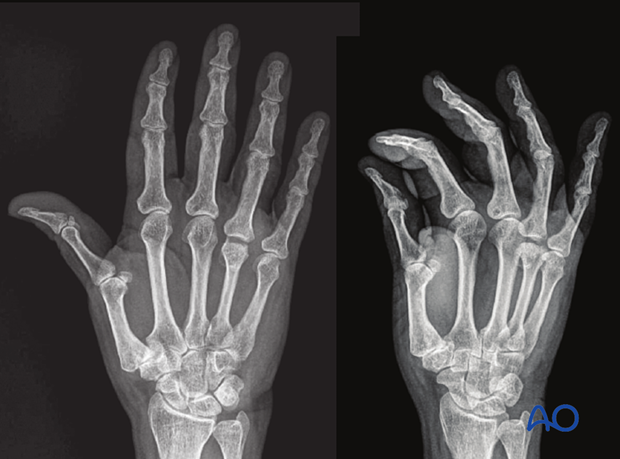Highlights of Metacarpals
Introduction
Publication of second edition on April 25, 2024
The content has been revised by Fabio Suarez and Aida Garcia with Simon Lambert as executive editor.
Visit the module entry page here!

Comments on the current edition
Author’s comments (Aida Garcia)
The hand – our best work, communication, and expression tool – requires a detailed study of the anatomy to apply all the surgical techniques described. The main goal of treating hand injuries is to recover its pinch and grip function. To achieve this, the management of soft tissues is essential to avoid fibrosis and/or stiffness.
Editor’s comments (Simon Lambert)
The hand, complementing visual expression and language as our means of communication and as the tool through which we interact with the environment, comprises simple, repeating units combined as a system of sensate levers bringing the palmar sensory receptors of the fingers into optimal relation with the object of the visual attention.
The hand also functions as a load bearing platform: during power grip (involving the whole hand), and pincer or tripod grip (involving mainly the radial column of the hand) the intracarpal relationships change, guided and limited by the intercarpal ligaments, to distribute the resultant load to the radius and ulna at the distal forearm. This adjustment brings the carpal bones into an energy-efficient interosseous-stable state of ‘close-packing’, permitting load-transfer with minimal effort from the brachio-(meta)carpal muscles.
This edition of the hand module addresses the challenges of internal fixation of the fractures and associated ligament injuries of the hand that often result in decrements – of sensibility or activity – caused by malalignments and instabilities.
New information is offered about current trends including the utility of adjunctive arthroscopic management of some injuries, intramedullary fixation methods, and updated rehabilitation programs.
Highlights
Changes and additions
The main differences to the first edition are:
- Update of plating procedures to VA locking plates
- Management of joint dislocation and fracture-dislocation
Pages on the following topics have been added:
- Nonoperative treatment to most of the fracture types
- Intramedullary screw fixation to transverse fractures
The following videos have been added:
- Dorsal Approach to Metacarpo-Phalangeal (MP) Joint of the Finger
- Palmar approach to metacarpophalangeal joint of the finger
- Phalanx—Proximal Fractures—Extension Block Splint (Burke Halter)
- Metacarpal IV—Long spiral fracture—Fixation with two 2.0 mm lag screws
- Metacarpal III—Short oblique fracture—Fixation with a 2.0 mm lag screw and 2.0 mm Variable Angle Adaption plate
- Metacarpal II—Transverse shaft fracture—Fixation with a 5-hole 2.0 mm LCP plate
- Metacarpal V, neck—Subcapital and comminuted fractures—ORIF using 1.5 mm VA Locking Metacarpal Neck Plate
- Metacarpal V, neck—Subcapital and comminuted fractures—Intramedullary splinting with two 1.25 K-wires
Read all release notes and the table of contents here.












